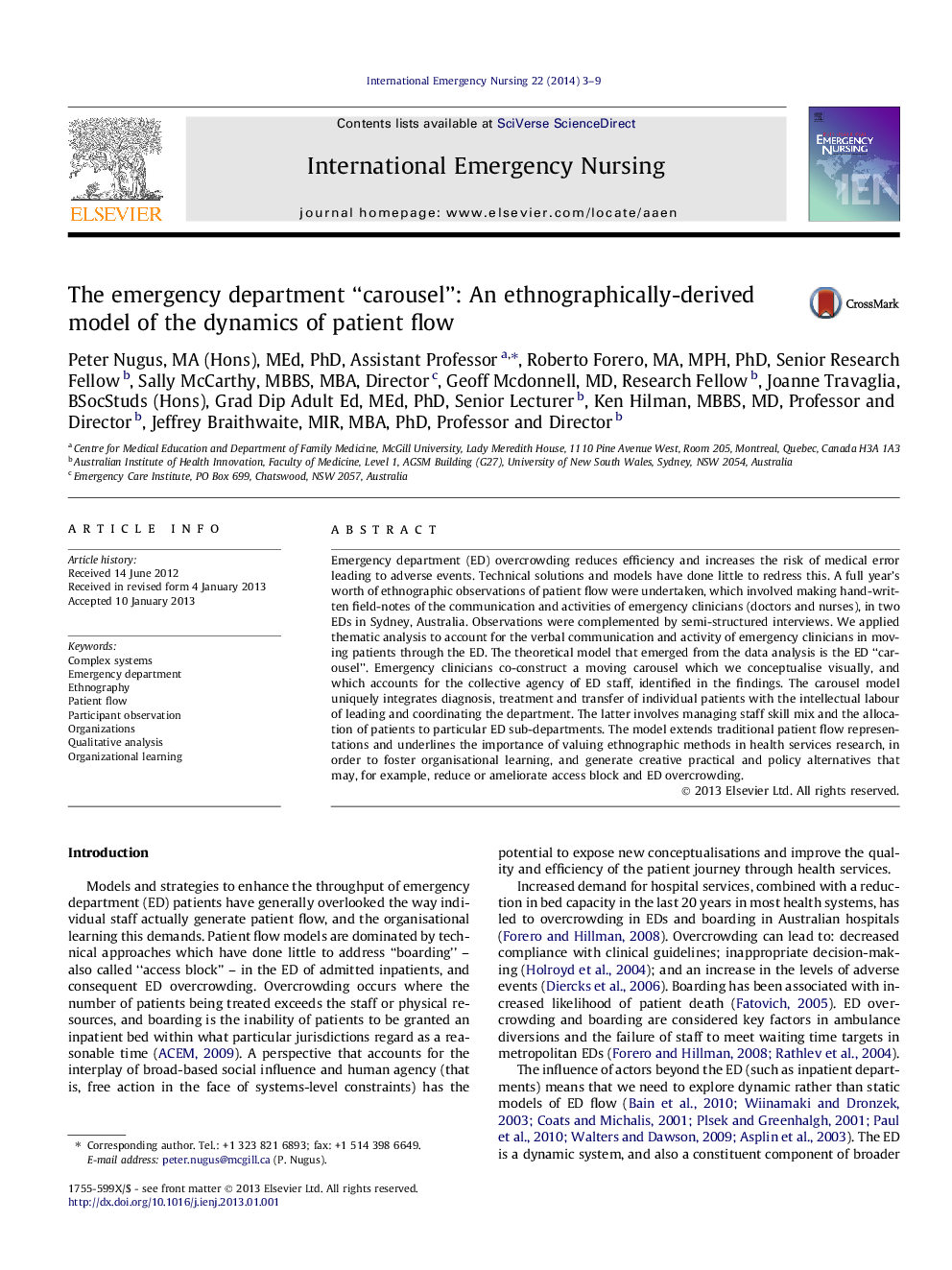| Article ID | Journal | Published Year | Pages | File Type |
|---|---|---|---|---|
| 2609573 | International Emergency Nursing | 2014 | 7 Pages |
Emergency department (ED) overcrowding reduces efficiency and increases the risk of medical error leading to adverse events. Technical solutions and models have done little to redress this. A full year’s worth of ethnographic observations of patient flow were undertaken, which involved making hand-written field-notes of the communication and activities of emergency clinicians (doctors and nurses), in two EDs in Sydney, Australia. Observations were complemented by semi-structured interviews. We applied thematic analysis to account for the verbal communication and activity of emergency clinicians in moving patients through the ED. The theoretical model that emerged from the data analysis is the ED “carousel”. Emergency clinicians co-construct a moving carousel which we conceptualise visually, and which accounts for the collective agency of ED staff, identified in the findings. The carousel model uniquely integrates diagnosis, treatment and transfer of individual patients with the intellectual labour of leading and coordinating the department. The latter involves managing staff skill mix and the allocation of patients to particular ED sub-departments. The model extends traditional patient flow representations and underlines the importance of valuing ethnographic methods in health services research, in order to foster organisational learning, and generate creative practical and policy alternatives that may, for example, reduce or ameliorate access block and ED overcrowding.
